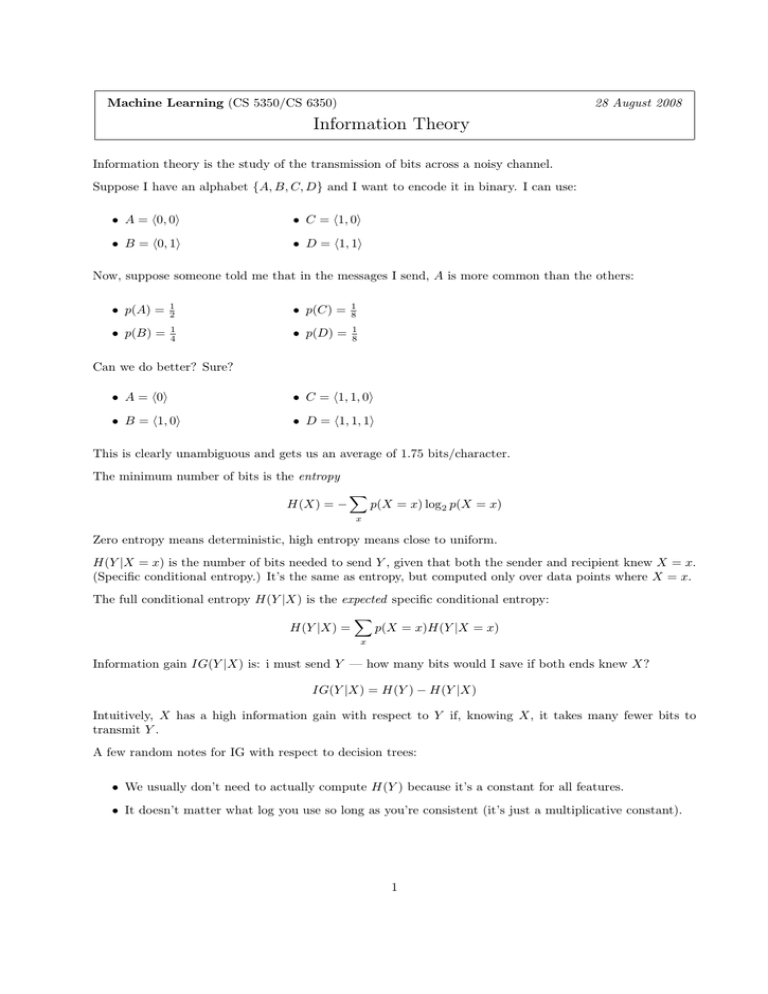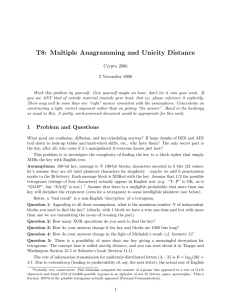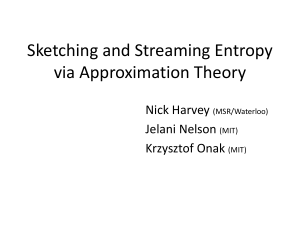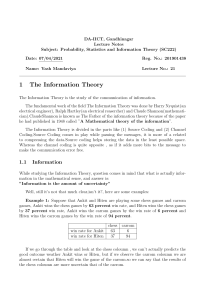Information Theory
advertisement

Machine Learning (CS 5350/CS 6350)
28 August 2008
Information Theory
Information theory is the study of the transmission of bits across a noisy channel.
Suppose I have an alphabet {A, B, C, D} and I want to encode it in binary. I can use:
• A = h0, 0i
• C = h1, 0i
• B = h0, 1i
• D = h1, 1i
Now, suppose someone told me that in the messages I send, A is more common than the others:
• p(A) =
1
2
• p(C) =
1
8
• p(B) =
1
4
• p(D) =
1
8
Can we do better? Sure?
• A = h0i
• C = h1, 1, 0i
• B = h1, 0i
• D = h1, 1, 1i
This is clearly unambiguous and gets us an average of 1.75 bits/character.
The minimum number of bits is the entropy
H(X) = −
X
p(X = x) log2 p(X = x)
x
Zero entropy means deterministic, high entropy means close to uniform.
H(Y |X = x) is the number of bits needed to send Y , given that both the sender and recipient knew X = x.
(Specific conditional entropy.) It’s the same as entropy, but computed only over data points where X = x.
The full conditional entropy H(Y |X) is the expected specific conditional entropy:
X
H(Y |X) =
p(X = x)H(Y |X = x)
x
Information gain IG(Y |X) is: i must send Y — how many bits would I save if both ends knew X?
IG(Y |X) = H(Y ) − H(Y |X)
Intuitively, X has a high information gain with respect to Y if, knowing X, it takes many fewer bits to
transmit Y .
A few random notes for IG with respect to decision trees:
• We usually don’t need to actually compute H(Y ) because it’s a constant for all features.
• It doesn’t matter what log you use so long as you’re consistent (it’s just a multiplicative constant).
1











